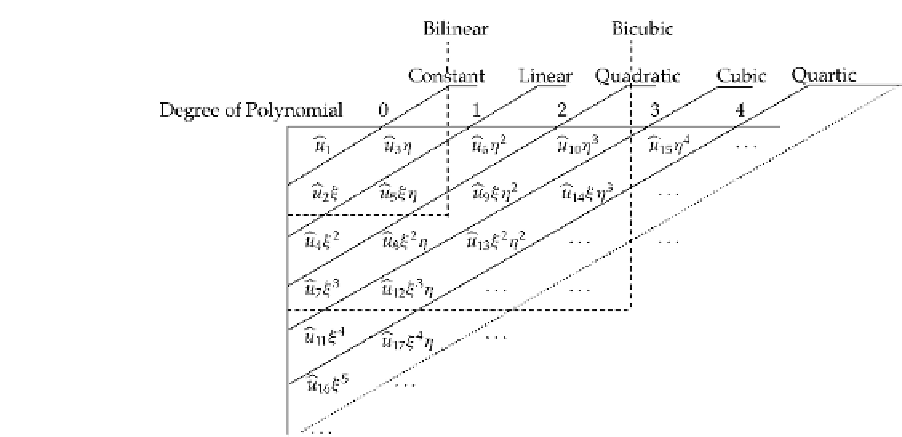Information Technology Reference
In-Depth Information
Note, for example, from Eq. (6.61) or the Pascal triangle, that ten terms are needed to form
a complete two-dimensional cubic polynomial.
There are several procedures available for using interpolation polynomials to represent
the response throughout a two- or three-dimensional element and to place a network of
nodes on the element. Three schemes—Lagrangian interpolation, natural coordinates, and
Hermitian interpolation—are considered in this section. Each is introduced as a unidirec-
tional polynomial and then extended to the multidimensional case.
6.5.6
Lagrangian Interpolation
In order to study the problem of creating an interpolation trial function for two- and three-
dimensional elements, we begin by considering a one-dimensional Lagrange polynomial
which provides an interpolation function for a line divided into segments. Products of these
polynomials lead to interpolation functions, along with a network of nodes, for multidi-
mensional elements.
One-Dimensional Case in Cartesian Coordinates
Consider a line (Fig. 6.26) divided into segments of equal length by
m
points (nodes), with
the nodes defined by the coordinates
ξ
1
,
ξ
2
,
...
,
ξ
m
. We wish to establish a function
u
(ξ )
that takes on the exact displacements
v
m
at these
m
points and also provides
approximate displacement values at points intermediate to these nodal points. In the case
of Lagrangian interpolation, a polynomial
u
v
1
,
v
2
,
...
,
(ξ )
of order
m
−
1isdefined to replace the true
displacements such that
u
(ξ
)
is equal to
v
i
at the nodal points
ξ
i
,
i.e.,
i
(ξ
)
=
v
=
...
u
i
,
i
1
,
2
,
,m
i
Express
u
(ξ )
as
m
m
u
(ξ )
=
N
i
(ξ )
u
(ξ
)
=
N
i
v
i
=
1
,
2
,
...
,m
(6.62)
i
i
i
i








Search WWH ::

Custom Search